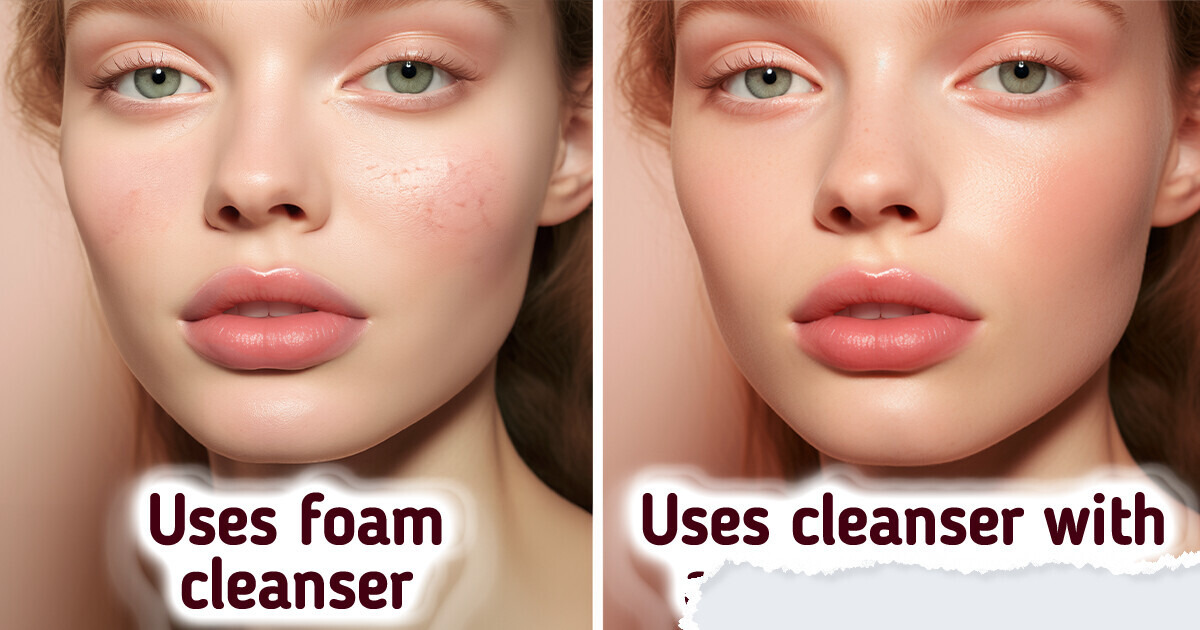Pierce Brosnan’s Wife Stuns People With Her Transformation During Her Latest Appearance


As temperatures drop, your skin faces new challenges—from dryness and irritation to increased sensitivity. To help you keep your skin healthy and radiant, here are 8 essential tips from dermatologists for tackling common cold-weather skin issues.
Your skin changes with the seasons, so it’s a good idea to adjust your skincare routine as the weather shifts, according to Dr. Ahmed. She suggests one simple change: if a serum with ingredients like vitamin C or hyaluronic acid worked for you in the summer, you might prefer using the same ingredients in a moisturizer form during the fall and winter. Serums are lightweight, and they may not provide enough moisture when the air gets drier.
If you use vitamin C in the morning, look for a thicker, more moisturizing product. This will help protect your skin from environmental factors like pollution. Always follow up with sunscreen for added moisture and protection.
Another option is to use your regular serum and follow it with a moisturizing sunscreen. This approach can be helpful if your skin tends to get oily or clogged when you layer too many products.
Dr. Ahmed notes that many of her patients believe hyaluronic acid is the best ingredient for protecting their skin in colder fall weather because it hydrates and locks in moisture. However, she explains that our skin naturally contains hyaluronic acid. When temperatures drop, she recommends adding a moisturizer with niacinamide (vitamin B3) to your routine. Niacinamide helps control excess oil and reduces water loss, which prevents dryness and irritation.
Ceramides, which are fats that help keep your skin barrier strong, are also helpful if your skin becomes red or flaky. Using a product that combines niacinamide and ceramides can be especially beneficial in these cases.
Dr. Ahmed isn’t a fan of foaming cleansers because the ingredients that make them foam often remove some of the skin’s natural oils. She recommends using a creamy cleanser instead to avoid drying out your skin. If you’re on a budget, she suggests mixing your foaming cleanser with a bit of plain moisturizer to reduce the tight, dry feeling.
When you finish your current cleanser, try hydrating with hyaluronic acid. These are gentle, nourishing, and still remove makeup and sunscreen well.
Some people believe that washing your face in the morning isn’t necessary, as it can dry out the skin more, and people only use water in colder months, or they only cleanse at night after wearing makeup. Dr. Ahmed disagrees, saying it’s important to cleanse to allow your serums and moisturizers to absorb properly. You should cleanse in the morning too, since sweat, dirt, and grime can build up on your skin overnight. A gentle, creamy cleanser will help without stripping your skin.
Ingredients like retinol, which promotes new skin cells and reduces hyperpigmentation, fine lines, and breakouts, as well as exfoliating acids like glycolic, salicylic, and lactic acid, can be harsh if overused. In cooler weather, when skin tends to be drier, these products can make dryness worse.
For fall and winter, especially if your skin is sensitive, Dr. Ahmed recommends applying a plain, simple moisturizer 30 minutes before using products with these active ingredients. This creates a thin barrier that helps reduce irritation while still allowing the products to work effectively.
Avoid applying retinol in the morning, as it increases your skin’s sensitivity to the sun. And don’t forget to apply sunscreen, as it’s essential for protecting your skin from sun damage, especially when using retinol.
Antioxidants help protect your skin from external factors like pollution, which can be more intense in colder months.
Look for moisturizers that contain ingredients like vitamin C, vitamin E, and ferulic acid. These can help shield your skin from damage and keep it healthy.
Dr. Ahmed recommends not only having a consistent cleansing routine, but also changing your pillowcase every two to three days and washing your face or bath towel regularly.
This helps maintain a healthy skin barrier. Why? It’s best to avoid dealing with breakouts on sensitive fall and winter skin, as common spot treatments like salicylic acid and benzoyl peroxide can further irritate and dry out your skin.
For some people, especially those with sensitive or reactive skin, fragrances or essential oils in skincare can cause irritation. If you usually handle fragranced products well during winter, that’s fine.
However, others may react differently. People tend to be more sensitive and more prone to irritation during this time. Even fragrances in products like cleansers, which you rinse off, can still lead to irritation for some.
You may want to reduce the percentage of active ingredients during the winter to still enjoy their benefits while minimizing irritation.
For instance, if you are finishing a 5–7% glycolic acid toner, consider trying a lower percentage product next. The same applies to retinol, which can worsen dry and irritated skin in colder weather.
To read more about beauty tips, you can check 7 Korean Skincare Routine Tips That Are a Gem for Busy People.











